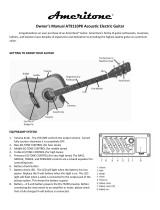
SINCE 1946...
Your new Fender
®
bass guitar holds more
than half a century of musical history.
Fender was founded in 1946 by Clarence
Leonidas “Leo” Fender, a Southern California
inventor and businessman with a talent and
passion for electronics. He started the company
in his small radio repair shop in Fullerton, Calif.,
building solid amplifiers and lap steel guitars
that were popular with Western swing bands
of the era. A decade later, these modest and
earnest beginnings would lead to an explosive
intersection with the birth of rock ‘n’ roll and
the first of several Fender “golden ages.”
With a tireless and constant commitment to
improved sound and design fueled by direct
and immediate feedback from professional
and influential musicians of the time, Leo and
his staff soon embarked on an extraordinary
creative streak that began in early 1951 with the
world’s first solid-body Spanish-style electric
guitar, the Telecaster
®
(and its single-pickup
version, the Esquire
®
). Later that year, Fender
introduced the world’s first commercially
successful solid-body electric bass guitar, the
Precision Bass
®
, soon followed by its companion
Bassman
®
amp. The Twin Amp
®
appeared in
1952 as the first model in one of the world’s most
acclaimed and enduring guitar amp families.
Fender unveiled perhaps the most popular
and influential electric guitar ever—the
Stratocaster
®
—in 1954. Within a decade, some
of rock’s greatest artists would start wringing
unbelievable sounds from the instrument—
sounds never envisioned by Fender designers,
or anyone else for that matter. Other classics
followed—the Jazzmaster
®
guitar (1958),
the Jazz Bass
®
(1960) the Jaguar® guitar
(1962), and more great amps. By the time it
was sold to CBS in 1965, Fender had grown
from a fledgling California guitar maker to an
industry leader with a stable of acclaimed
instruments and amplifiers that revolutionized
and profoundly transformed music worldwide.
After the CBS years, the modern-era Fender
emerged in the mid 1980s to become the
iconic brand it is today, with worldwide
influence on music and popular culture.
Just as it was when it began, Fender continues
to be driven by continuous innovation,
passion for music and a commitment to
constant input from musicians like you.
Thank you for becoming part of this history,
and enjoy your new Fender instrument.
7




















